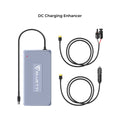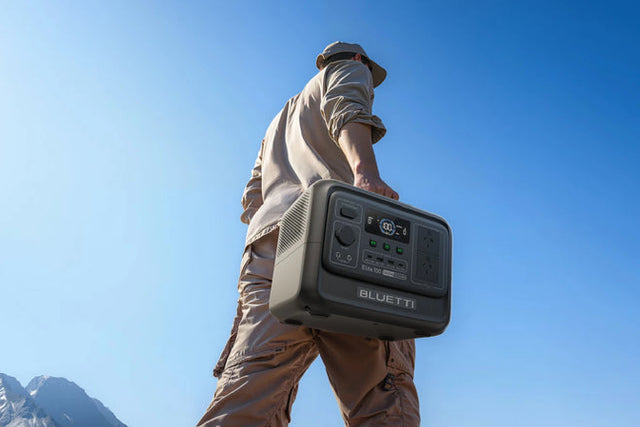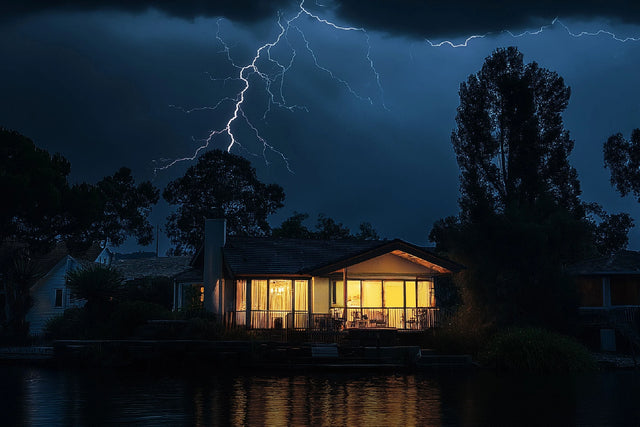Welcome to the world of tiny homes! In recent years, these compact and minimalist homes have gained popularity in Australia as an alternative to traditional housing. With the growing concern for sustainable living and rising energy costs, more and more people are turning to tiny homes as a way to reduce their carbon footprint and save money. However, with limited space, it can be a challenge to power these homes efficiently. That's where solar energy comes in. In this guide, we will explore everything you need to know about tiny home solar systems in Australia – from the basics of solar energy to the best options for your tiny home. Whether you're a tiny home owner, builder, or simply curious about sustainable living, this article is for you. Let's dive in!
I.Benefits of using solar power for tiny homes
Tiny homes, also known as micro homes or tiny houses, are a growing trend in Australia. These are small, compact and efficient homes that typically range from 100 to 400 square feet. They are designed to maximize space and minimize costs, making them an affordable housing option for many people.
This trend has gained popularity in recent years due to the increasing housing crisis and the desire for a more sustainable and minimalist lifestyle. However, one major challenge faced by tiny home owners is finding an efficient and affordable source of energy. This is where solar power comes in, providing a solution that is both sustainable and cost-effective.
B. The rising popularity of tiny homes in Australia
The tiny home movement has gained significant popularity in Australia in recent years. This is due to a number of factors, including the increasing cost of housing, the desire for a simpler and more sustainable lifestyle, and the rise of social media platforms showcasing tiny home designs and lifestyles.
In addition, tiny homes offer more flexibility and freedom to their owners. They can be built on wheels, allowing for easy transportation, or on traditional foundations, providing a sense of stability and permanence. This makes them appealing to a wide range of people, from young adults looking to escape the rental market to retirees seeking a downsized and affordable living option.
C. Benefits of using solar power for tiny homes
Solar power has become a popular choice for tiny homes in Australia, and for good reason. Here are some of the benefits:
- Cost-effective: Tiny homes are all about minimizing costs, and solar power is a great way to achieve this. Once the initial investment is made for the solar panels and installation, the energy source is essentially free, significantly reducing utility bills.
- Sustainable: Tiny homes are often built with sustainability in mind, and solar power fits perfectly with this concept. By harnessing energy from the sun, tiny homes can reduce their carbon footprint and minimize their impact on the environment.
- Off-grid living: One of the main reasons people choose to live in a tiny home is to be self-sufficient and off-grid. Solar power allows for this, as it can provide enough energy to meet all the needs of a tiny home, including lighting, heating, and appliances.
- Minimal maintenance: Solar panels require minimal maintenance, making them an ideal choice for a small home where space is limited. As long as they are installed correctly and kept clean, solar panels can last for decades with minimal upkeep.
solar power is a practical and sustainable solution for tiny homes in Australia. Not only does it provide energy efficiency and cost savings, but it also aligns with the values of the tiny home movement - simplicity, sustainability, and self-sufficiency.

IV. Components of a Tiny Home Solar System
A tiny home solar system is composed of several key components that work together to generate and store electricity. Understanding these components and their functions is crucial in designing an efficient and reliable solar system for your tiny home in Australia.
A. Solar Panels
The most essential component of a solar system is the solar panels. These panels are responsible for converting sunlight into electricity through the photovoltaic effect. In Australia, there are several types of solar panels available in the market, including monocrystalline, polycrystalline, and thin-film panels.
When choosing panels for a tiny home, there are a few factors to consider. The first is the size and weight of the panels, as tiny homes have limited space and need lightweight panels to avoid weighing down the structure. Secondly, the efficiency and output of the panels are crucial in ensuring that the system can meet the energy demands of a tiny home.
B. Batteries
Battery storage is crucial for a tiny home solar system, as it allows for storing excess energy generated during peak sunlight hours and using it later when there is no sunlight. The most commonly used batteries in solar systems are lead-acid and lithium-ion batteries.
Lead-acid batteries are less expensive but require regular maintenance and have a shorter lifespan compared to lithium-ion batteries. On the other hand, lithium-ion batteries are more durable and have a longer lifespan, but they come with a higher price tag.
C. Inverter
The inverter is another essential component of a solar system that converts the direct current (DC) electricity generated by solar panels into alternating current (AC) electricity that can be used in homes. Inverters also play a crucial role in monitoring and managing the flow of energy in the system.
There are three main types of inverters suitable for a tiny home solar system: string inverters, microinverters, and power optimizers. String inverters are the most commonly used and are cost-effective, while microinverters and power optimizers offer individual panel-level optimization for improved performance.
D. Charge Controllers
Charge controllers are responsible for regulating and controlling the flow of energy from the solar panels to the battery. They prevent overcharging and damage to the battery, as well as ensure that the battery is charged efficiently.
For tiny homes, it is recommended to use a charge controller with a maximum power point tracking (MPPT) feature. MPPT controllers are more advanced and can help improve the efficiency of the system by up to 30% compared to traditional pulse-width modulation (PWM) controllers.
when designing a tiny home solar system in Australia, it is essential to carefully consider the components and their functions to ensure a reliable and efficient system. With the right components and proper installation, a tiny home solar system can provide clean and sustainable energy for your home.

V. Designing a Tiny Home Solar System
Designing a solar system for a tiny home in Australia requires careful consideration of various factors. These factors include the location and sun exposure of the tiny home, the energy needs and usage of the occupants, and the budget allocated for the solar system. Here, we will discuss these factors in detail and provide examples of successful tiny home solar system designs in Australia.
A. Factors to Consider when Designing a Solar System for a Tiny Home
1. Location and Sun Exposure: The location and orientation of the tiny home are crucial factors to consider when designing a solar system. Australia is a vast country with varying climates and sun exposure, so it is essential to choose the right location for the tiny home. Ideally, the tiny home should be situated in an area with maximum sunlight exposure, with minimal shade from trees, buildings, or other structures. This will ensure that the solar panels receive enough sunlight to generate sufficient electricity.
2. Energy Needs and Usage: The energy needs and usage of the occupants are crucial in determining the size and type of solar system to install. It is essential to consider the appliances and devices that will be used in the tiny home and how much energy they consume. This will help determine the number and size of solar panels needed to meet the energy demand of the tiny home.
3. Budget: The budget allocated for the solar system is also a crucial factor to consider. The cost of solar panels and other components can vary significantly, so it is essential to have a budget in mind and stick to it. It is also vital to consider the long-term savings that can be achieved with a solar system, as it can significantly reduce or even eliminate electricity bills over time.
B. Examples of Successful Tiny Home Solar System Designs in Australia
There are many successful tiny home solar system designs in Australia, and here are two examples:
i. The Off-Grid Solar System: This design is suitable for tiny homes that are not connected to the main power grid. It consists of a rooftop solar panel array, a battery bank, and an inverter. The solar panels collect and convert sunlight into electricity, which is stored in the battery bank. The inverter then converts the stored DC energy into AC energy that can be used to power the appliances and devices in the tiny home. This system is entirely self-sufficient, making it perfect for remote or off-grid locations.
ii. The Grid-Tied Solar System: This design is suitable for tiny homes that are connected to the main power grid. It consists of a rooftop solar panel array, an inverter, and a grid connection. The solar panels collect and convert sunlight into electricity, which is then fed into the grid. The tiny home can use this electricity from the grid, and any excess energy generated by the solar panels can be sold back to the grid for credits or monetary compensation. This system is ideal for tiny homes in urban or suburban areas.
designing a solar system for a tiny home in Australia requires careful consideration of the location and sun exposure, energy needs and usage, and budget. It is essential to choose the right design that best suits the needs and circumstances of the tiny home. With the right design, a tiny home solar system can provide a sustainable and cost-effective source of electricity for its occupants.
VII. Success Stories: Tiny Homes Powered by Solar Energy in Australia
Australia is known for its vast and beautiful landscapes, making it an ideal location for tiny homes. With a growing interest in minimalist living and sustainable practices, tiny homes have gained popularity in recent years. One of the key factors that make these small abodes sustainable is their use of solar energy. Let's take a look at some real-life success stories of tiny homes powered by solar energy in Australia.
A. Real-life examples of tiny homes powered by solar energy in Australia
One of the early adopters of solar-powered tiny homes in Australia is Lara Nobel, who built her first tiny home in 2014. Located in the picturesque countryside of Victoria, Lara's tiny home is completely off-grid, relying solely on solar power for all its energy needs. Her 20-square-meter home is equipped with a 2.5 kW solar system, which provides enough energy for her daily needs.
Another inspiring example is that of The Tiny Home Company, based in Queensland. They specialize in building sustainable tiny homes that are powered entirely by solar energy. Their homes are equipped with solar panels, batteries, and inverters, allowing homeowners to live completely off the grid. The company has successfully installed over 50 tiny homes across Australia, providing a sustainable and affordable solution for those looking to downsize.
B. Positive impacts on the environment and homeowners' lives
The use of solar energy in tiny homes has not only reduced the carbon footprint but has also brought about a host of other positive impacts. These homes consume little to no energy from the grid, reducing the strain on traditional power sources. Additionally, the use of solar energy also reduces the reliance on fossil fuels, promoting a cleaner and more sustainable way of living.
Moreover, solar-powered tiny homes have also had a significant impact on the lives of homeowners. With the rising cost of living and housing, many Australians are struggling to afford a traditional home. However, tiny homes powered by solar energy provide a more affordable and sustainable alternative. These homes also allow homeowners to live off-grid, giving them more freedom and flexibility in their lifestyle choices.
C. Potential for further adoption of tiny home solar systems in Australia
The success stories of solar-powered tiny homes in Australia have sparked an interest in many individuals to adopt this sustainable living style. In addition, the Australian government has also recognized the potential of tiny homes as a solution for affordable and sustainable housing. In 2019, the government announced a $3.5 million grant for tiny home projects, with a specific focus on solar-powered homes.
Furthermore, the decreasing cost of solar panels and the rise of sustainable living practices have created a favorable environment for the further adoption of tiny home solar systems in Australia. With more and more people becoming environmentally conscious and looking for alternative housing solutions, it is expected that the trend of solar-powered tiny homes will continue to grow in the future.
the success stories of tiny homes powered by solar energy in Australia serve as a testament to the potential of this sustainable living style. Not only does it benefit the environment, but it also provides a more affordable and flexible lifestyle for homeowners. With the government's support and a growing interest in sustainable practices, we can expect to see more tiny homes powered by solar energy across Australia in the coming years.

BLUETTI AC500 + B300S: The Ultimate Home Battery Backup System for Tiny Homes in Australia
The concept of tiny homes has gained popularity in recent years, especially in Australia. These compact and sustainable living spaces offer an affordable and eco-friendly housing solution for many Australians. With the rise of tiny homes, the demand for off-grid and self-sufficient systems has also increased. This is where the BLUETTI AC500 + B300S Home Battery Backup energy storage system comes in. This state-of-the-art system is designed specifically for tiny homes, providing an efficient and reliable source of electricity. In this article, we will explore the features and benefits of this system and how it can help you maximize the potential of your tiny home's solar system in Australia.The Power of BLUETTI AC500 + B300S
The BLUETTI AC500 + B300S system is a powerful and expandable home battery backup system. It is equipped with a 5,000W rated power, making it ideal for powering various household appliances and devices. This system has an expandable capacity from 3,072Wh to 18,432Wh, which means you can add extra batteries to increase its storage capacity. This is especially useful for tiny homes, as it allows you to customize the system according to your energy needs.Six Ways to Recharge
One of the standout features of the BLUETTI AC500 + B300S system is its versatility when it comes to recharging. It offers six different ways to recharge, including AC, solar, car, generator, lead-acid battery, and dual charging. This means that you can recharge your system using different sources, depending on the availability and your preference. For instance, if you live in a sunny area, you can take advantage of solar energy to recharge your system, making it a truly self-sufficient and sustainable option for your tiny home.Efficient and Reliable
The BLUETTI AC500 + B300S system is designed to maximize the retention of electricity generated by your solar panels. This means that you can store and use the excess energy for later use, reducing your dependence on the grid. This is particularly beneficial for tiny homes in remote areas where access to the grid may not be readily available. Additionally, this system is equipped with advanced safety features, such as over-voltage protection, over-current protection, and short-circuit protection, ensuring a safe and reliable source of electricity for your tiny home.Compact and Easy to Install
The BLUETTI AC500 + B300S system is compact and easy to install, making it an ideal choice for tiny homes. It can be easily mounted on any wall, and the installation process is quick and hassle-free. This compact design also makes it a space-saving option, which is crucial for tiny homes where every inch counts.Cost-Effective Solution
Investing in a home battery backup system may seem like a significant expense, but in the long run, it can save you a significant amount of money on electricity bills. With the BLUETTI AC500 + B300S system, you can reduce your reliance on the grid and take advantage of solar energy, resulting in lower energy costs. Moreover, this system has a longer lifespan compared to traditional lead-acid batteries, making it a cost-effective solution for your tiny home in the long run.Conclusion
the BLUETTI AC500 + B300S Home Battery Backup energy storage system is a game-changer for tiny homes in Australia. With its impressive power and expandable capacity, versatile recharging options, and efficient and reliable performance, it is a must-have for any tiny home owner looking to maximize their solar system's potential. Its compact design, easy installation, and cost-effectiveness make it a valuable investment for tiny homes, providing a sustainable and self-sufficient source of electricity.
Cost and Savings Analysis
When considering installing a solar system for a tiny home in Australia, it is important to weigh the initial investment costs against the long-term savings and benefits. While there is a significant upfront cost to installing solar panels and a battery system, the potential for savings on energy bills and the positive impact on the environment should also be taken into account.
A. Initial Investment Costs
The cost of a solar system for a tiny home in Australia can vary depending on factors such as the size of the system, the location, and any additional features. On average, the initial investment for a small solar system can range from $4,000 to $10,000, while larger systems can cost upwards of $20,000. This may seem like a significant expense, but it is important to remember that solar panels have a lifespan of 25-30 years and require minimal maintenance, making them a worthwhile investment in the long run.
B. Long-term Savings on Energy Bills
One of the main benefits of installing a solar system for a tiny home in Australia is the potential for significant savings on energy bills. By using solar energy to power your home, you can greatly reduce or even eliminate your reliance on the grid. This means that you will not have to pay for electricity from traditional sources, which are likely to continue to increase in cost over time.
Additionally, Australia has a generous feed-in tariff system, which means that if your solar system produces excess energy, you can sell it back to the grid at a higher rate than what you pay for electricity. This can further reduce your overall energy costs and potentially even result in a credit on your energy bill.
C. Calculating Return on Investment (ROI)
When determining the true cost of a solar system for your tiny home in Australia, it is important to calculate the ROI. This can help you understand how long it will take for your investment to pay off through energy savings. Factors such as the initial investment cost, potential savings on energy bills, and the lifespan of the system should all be considered when calculating your ROI. In general, most solar systems will pay for themselves within 5-10 years, making them a smart financial decision in the long run.
D. Economic and Environmental Benefits of Using Solar Energy
In addition to the potential cost savings, there are also many economic and environmental benefits of using solar energy for a tiny home in Australia. By reducing your reliance on the grid, you are helping to decrease demand for traditional sources of electricity, which can have a positive impact on the environment. Additionally, the Australian government offers incentives such as the Small-scale Renewable Energy Scheme (SRES) and the Clean Energy Finance Corporation (CEFC) to encourage the use of renewable energy sources like solar power.
Solar energy also allows for greater energy independence, as it is not subject to fluctuations in energy prices or availability. This can be especially beneficial for those living in remote areas with limited access to traditional electricity sources.
while there is a significant upfront cost to installing a solar system for a tiny home in Australia, the potential for long-term savings, as well as the economic and environmental benefits, make it a worthwhile investment. It is important to carefully consider the initial investment costs, potential ROI, and the overall benefits of using solar energy in order to make an informed decision for your tiny home.
1. What type of solar panel is best suited for a tiny home in Australia?
- There are a few factors to consider when choosing solar panels for a tiny home in Australia. Generally, monocrystalline panels are recommended as they have higher efficiency and can produce more power in limited space. However, if you have limited roof space, you may want to consider flexible or thin-film panels that can be mounted on curved surfaces. It is best to consult with a solar expert to determine the best panel type for your specific needs and location.
When deciding on the type of solar panel for your tiny home in Australia, there are a few key factors to consider. One of the main considerations is the efficiency of the panel, which refers to how much electricity it can produce from the sunlight it receives. In this regard, monocrystalline panels are often the top choice for tiny homes in Australia. This is because they have a higher efficiency compared to other panel types, meaning they can generate more power in a limited space.
However, if you have limited roof space on your tiny home, you may want to consider alternative options such as flexible or thin-film panels. These types of panels can be mounted on curved surfaces, making them a better fit for smaller or irregularly shaped roofs. They also tend to be more lightweight and easier to install, which can be advantageous for tiny homes.
It is important to note that the climate and location of your tiny home in Australia can also impact the type of solar panel that would work best for you. For instance, if you are in an area with high temperatures and lots of sunlight, you may want to consider panels that are built to withstand these conditions. Consulting with a solar expert can help you determine the most suitable panel type for your specific needs and location.
while monocrystalline panels are generally recommended for their high efficiency, flexible or thin-film panels may be a better fit for tiny homes with limited roof space. Ultimately, the best type of solar panel for your tiny home in Australia will depend on your unique situation and should be determined after careful consideration and consultation with a solar professional.
2. How much solar power do I need for my tiny home?
- The amount of solar power you will need for your tiny home depends on your energy usage and location. It is important to consider your daily energy needs and the number of panels that can fit on your roof. A solar expert can help calculate the required system size based on your energy needs and the available sunlight in your area.
In order to accurately determine how much solar power is needed for a tiny home in Australia, it is important to take into account several factors. The first consideration is your energy usage - how much electricity do you typically use on a daily basis? This can vary greatly depending on your lifestyle and the appliances and devices you have in your home. Next, you will need to assess the available space on your roof for solar panels. This will determine the maximum number of panels that can be installed on your tiny home.
Once you have a general idea of your energy needs and available space, it is recommended to consult a solar expert who can provide a more precise calculation. They will consider your location in Australia and the amount of sunlight that is typically available in that area. This will help determine the size of the solar system needed to meet your energy requirements.
It is also important to keep in mind that the purpose of a tiny home is often to live a more sustainable and minimalistic lifestyle. Therefore, it may be beneficial to invest in energy-efficient appliances and make lifestyle changes that can reduce your energy usage. This can result in a smaller solar system being needed, ultimately saving you money and reducing your environmental impact.
The amount of solar power needed for a tiny home in Australia will vary depending on individual energy usage and location. Consulting a solar expert and making conscious efforts to reduce energy consumption can help determine the appropriate system size for your tiny home.
3. What is the best way to store excess solar energy in a tiny home?
- One option is to use a battery storage system, which allows you to store excess energy generated by your solar panels for later use. Another option is to connect to the grid and sell back any excess energy through a feed-in tariff. The best system for you will depend on your energy needs and budget.
Having a reliable and efficient energy storage system is crucial for tiny homes that rely on solar power. The two main options for storing excess energy are battery storage systems and connecting to the grid through a feed-in tariff.
A battery storage system works by storing the excess energy generated by solar panels in batteries for later use. This allows for a more flexible and reliable source of energy, especially during times when there is limited sunlight. However, battery storage systems can be expensive and may not be suitable for those on a tight budget.
On the other hand, connecting to the grid and selling back excess energy through a feed-in tariff can be a more cost-effective option. This involves sending excess energy generated by solar panels back to the grid, which can then be used by other homes or businesses. The homeowner will receive credits or payments for the energy they contribute to the grid.
The best storage system for a tiny home will depend on individual energy needs and budget. It is important to carefully consider both options and consult with professionals to determine which system would be most suitable.
4. How can I ensure my tiny home solar system is compliant with Australian regulations?
- It is important to work with a reputable and experienced solar installer who is familiar with Australian regulations. They will ensure that your system is designed and installed in compliance with all relevant standards and regulations. Additionally, you can check for any specific regulations or requirements in your state or territory.
Additionally, it is important to research and familiarize yourself with any specific regulations that may apply to your tiny home solar system. This could include permits, approvals, or inspections that are necessary for the installation of solar panels. By cooperating with your installer and staying informed about regulations, you can ensure that your tiny home solar system is fully compliant and safe for use in Australia. Remember, compliance with regulations not only protects your investment but also contributes to the overall safety and reliability of the Australian solar industry.
5. Are there any government incentives or rebates available for tiny home solar systems in Australia?
- Yes, there are various government incentives and rebates available for solar systems in Australia, including for tiny homes. These include the Small-scale Renewable Energy Scheme (SRES) which provides a discount on the cost of your solar system, as well as state-based incentives such as feed-in tariffs. It is best to consult with a solar expert to determine the incentives available in your area and how you can take advantage of them.
Yes, there are various government incentives and rebates available for solar systems in Australia, including for tiny homes. These include the Small-scale Renewable Energy Scheme (SRES) which provides a discount on the cost of your solar system, as well as state-based incentives such as feed-in tariffs. It is best to consult with a solar expert to determine the incentives available in your area and how you can take advantage of them.
tiny home solar systems in Australia are a practical and sustainable solution for those looking to live a minimalist lifestyle. With the rising cost of utility bills and increasing concerns about environmental impact, more and more people are turning to solar energy to power their homes.
When considering a tiny home solar system, it's important to take into account your specific energy needs and budget. A consultation with a solar expert can help determine the right size and type of system for your home.
In addition to the upfront cost savings, solar energy can also provide long-term financial benefits. With the potential to generate excess energy, you can sell it back to the grid or store it in batteries for future use.
It's also crucial to research and understand the government incentives and rebates available for installing solar systems. The Australian government offers various schemes to promote the use of renewable energy, such as the Small-scale Renewable Energy Scheme and the Feed-in Tariff Scheme.
When selecting solar panels for your tiny home, consider the climate and location as this can affect the efficiency of the panels. In Australia, a northern-facing roof with minimal shading is ideal for maximum solar energy production.
Proper maintenance and monitoring of your system are also crucial for optimal performance. This includes regularly cleaning the panels, checking for any damage, and monitoring the energy production to ensure everything is running smoothly.
tiny home solar systems are an excellent investment for those looking to live off-grid or reduce their environmental impact. With careful planning and consideration, you can enjoy the benefits of clean and renewable energy while also saving money in the long run. So, start your journey towards a sustainable lifestyle with a tiny home solar system in Australia today.












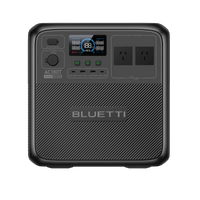












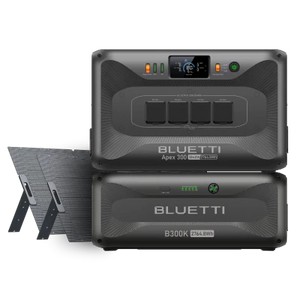





















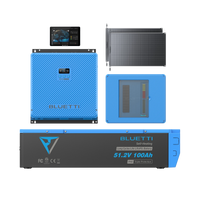


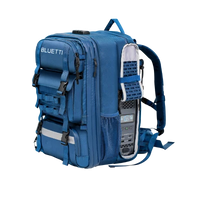


















![[Phased Out] BLUETTI B80P Expansion Battery | 806Wh](http://www.bluettipower.com.au/cdn/shop/files/202310025B80P_2000-2000px_4_4caa0c1c-4dab-4272-9e9b-2b7507e5bd81.jpg?v=1713777870&width=200)
![[Phased Out] BLUETTI B210P Expansion Battery | 2,150Wh](http://www.bluettipower.com.au/cdn/shop/files/2_08cf9ef3-03a4-4489-b641-d3edb8094896.webp?v=1716016566&width=200)
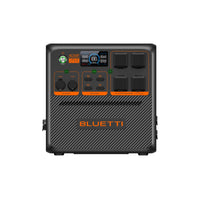


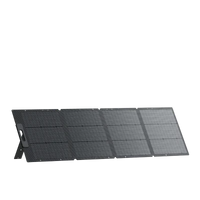


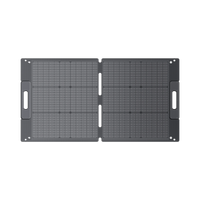





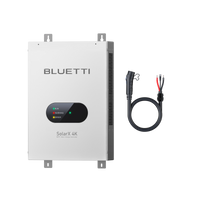






















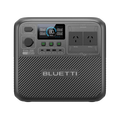

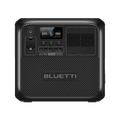






























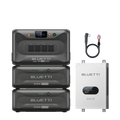



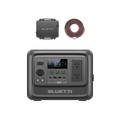





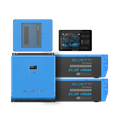














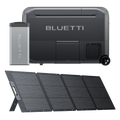




















![[Phased Out] BLUETTI B80P Expansion Battery | 806Wh](http://www.bluettipower.com.au/cdn/shop/files/202310025B80P_2000-2000px_4_4caa0c1c-4dab-4272-9e9b-2b7507e5bd81.jpg?v=1713777870&width=120)
![[Phased Out] BLUETTI B210P Expansion Battery | 2,150Wh](http://www.bluettipower.com.au/cdn/shop/files/2_08cf9ef3-03a4-4489-b641-d3edb8094896.webp?v=1716016566&width=120)


















